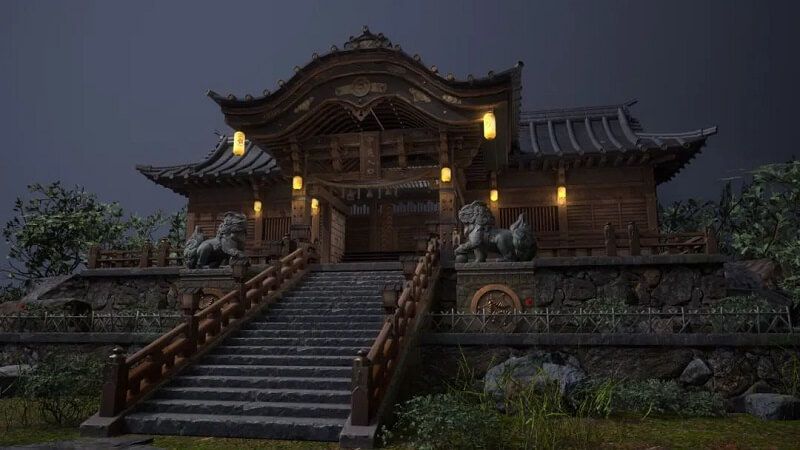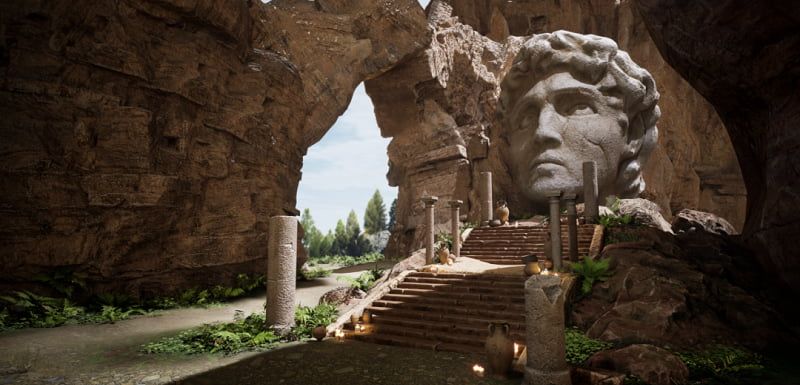3ds Max Modeling Tutorial: Hard Surface Modeling (1)

The fast and affordable cloud rendering services provider, Fox Renderfarm still share with you 3ds Max modeling tutorials. In this project, we will learn to use 3ds Max's hard surface modeling technology to practice making a robot head. In this process, we will also explain some points that need to be paid attention to in the production.
NURBS
When using NURBS to make a model, the position of the point and the distance between the points determine the curvature of the NURBS. The closer one point to another, the harder the structure.

This is a figure drawn by NURBS. The mode of the spline is B-spline. Five key points constitute this figure.

Next, start drawing with polygons and place the five points of the polygon at the same positions as the five vertices of the B-spline, and finally add subdivisions.
At this time, it can be found that the curvature of the graphics obtained by using polygons and subdivision surfaces is almost the same as that of the graphics drawn by using splines. Therefore, the principle of modeling using subdivision surfaces is similar to that of drawing splines. Editing the point, line and surface of a polygon is actually the same as using a pen to draw lines in PhotoShop. The steps are to draw the key points on the structure first, and finally get a smooth surface through these points.
The above graphics are very smooth, so what should we do if we want the structure of the model to look harder?
In fact, the method of making splines in B-spline mode is the same. Just add one or two points close to it next to the hard point, and the structure will become hard.

The figure below is a combination of polygons and subdivision surfaces. Similarly, as long as you add two very close points on the edge of the hard point, the result is the same.
Therefore, when modeling with subdivision surfaces, the closer the points are, the harder the structure.
Four-sided Principle
An important principle of polygon modeling is to try to ensure that all faces are four-sided faces, and avoid triangular faces and faces with more than four sides.

The reason is simple. When adding subdivision surfaces to the model, if there are triangles and more than four sides on the model, the result may be very bad.

Points
In a polygon mesh, if a point is connected to more than four edges, it is easy to make the surface of the model not smooth, so there should be as few such points in the modeling process. If this point cannot be avoided, it can be placed in an unimportant place or on a flat surface.

As shown in the figure, this point is just on the middle crease line, resulting in an ugly pothole in the middle of the model. But if moved to the plane, there is no problem.

Now please follow the best cloud rendering services provider and CPU & GPU render farm to our next part: 3ds Max Modeling Tutorial: Hard Surface Modeling (2).
Recommended reading
Top 9 Best And Free Blender Render Farms of 2025
2024-12-30
What is Jibaro? Reveal the Story and Techniques Behind the Production of Jibaro "Love, Death & Robots"
2025-11-03
Top 10 Free And Best Cloud Rendering Services in 2025
2025-03-03
9 Best & Free 3D Rendering Software for Architects & Designers
2025-12-08
Top 8 After Effects Render Farm Recommended of 2025
2025-02-10
Easy Cel Shading Tutorial for Cartoon in Blender Within 2 Minutes
2025-11-26
Shocked! The Secret Behind Using 3D to Make 2D Animation was Revealed!
2025-02-10
How to Render High-quality Images in Blender
2024-12-04
Partners
Previous: Octane For C4D Tutorial - Making Forest Scene Model Light Rendering (1)
Next: 3ds Max Modeling Tutorial: Hard Surface Modeling (2)
Interested







